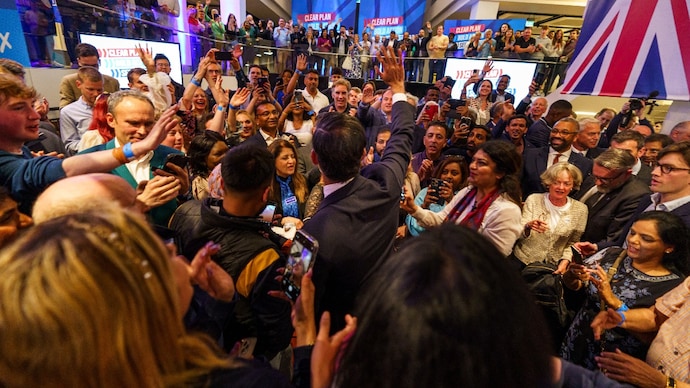Nahm, Gadigal, Tamaki Makaulau: Indigenous place names to watch at Women’s World Cup | 2023 Women’s World Cup
T.Women’s World Cup kicks off in Australia new zealand And fans will notice that every city where matches are held is identified by two names. One is the English place names that people are most familiar with. Another is the language of the indigenous people in which this city is located.
The tournament began at Auckland-Tamaki Makaulau with the first match between co-hosts New Zealand and Norway. A few hours later, across the Tasman, people flocked to his Australian stands at the stadium to watch the match between Australia and the Republic of Ireland. The match was played in Sydney/Gadigal. As the tournament progresses, teams will play in cities such as Melbourne/Namm, Perth/Borloo and Wellington/Te Whanganui-a-Tara.
For the first time at the World Cup, all billboards, broadcasts, stadiums and online materials will have dual names for the nine host cities.
Some of the cultural initiatives were facilitated by a committee of six Indigenous women. The committee, consisting of three members per host country, was appointed by FIFA to advise the organizations on inclusion and respect.
Panel member Janelle Riki Waaka said, Maori The group, which runs a consulting firm, said it advised FIFA on a variety of subjects, including a Maori welcome from the local iwi (tribe) before each match and for each visiting team, according to ticanga (customs) for guests.
“As far as I know, that has never happened in a women’s tournament in the world,” said Riki Waaka.
In 2021, FIFA Women’s World Cup 2023 chief executive Dave Biesch said branding highlighting the host country’s indigenous culture was “a fitting symbol” of the impact the tournament is expected to have.
“We are proud that our Maori and Aboriginal Australian cultures have played a key role in creating this strong and unique global brand,” he said.
In Australia, decisions to incorporate indigenous names Widespread use of indigenous names and language, and comes with the countries that will vote on the creation of a nation. Indigenous Voices to Congress later this year.
FIFA also agreed to display Aboriginal, Torres Strait Islander and Maori flags at the stadium for the first time. The decision came at the 11th hour after extensive lobbying from the Australian and New Zealand football federations.
“At every major tournament, my family would bring an Aboriginal flag. For me, it’s clearly part of my history and culture, and seeing my family carrying the flag in the crowd is very nostalgic for me,” said Maltidus forward Ananaiwan. Kai Simon said before the FIFA flag announcement.
“There is no better place to showcase Indigenous Indigenous culture and traditions than here in our homeland of Australia. We hope that people from overseas can see the rich culture we have here, and be educated along the way.”
In New Zealand, ball “poi” attached to a string used in Kapa Haka, a Maori performing art, is distributed at match venues. new waitata (song) released for the event Encourage audiences to experiment with the art form.
Appropriation of Māori culture has been a problem in sports before, and the World Cup was no exception. At one of the team’s welcome ceremonies to a FIFA event this week, members of the Spanish team apologized to organizers for a recent video of players mocking the haka, a Maori dance, filmed shortly after arriving in New Zealand.
“We’ve only been in Aotearoa, New Zealand for a few days, but we still have a lot to learn about the culture,” team captain Ivana Andrés told the iwi Rangitan members. According to 1News.
Riki Waaka said these episodes show that not every country is “on the same footing when it comes to respecting indigenous peoples” and that teams visiting the country need more education on customs and expectations for future events.

But the altitude Maori And tournament culture was a “strong” force, she added.
“I think the ripple effect is huge and cannot be underestimated,” she says. “It’s about normalizing our Leos in mainstream spaces, outside Maori spaces.”
Riki Waaka said it will be an emotional moment when the Tino Rangatiratanga (Maori Sovereignty) flag is hoisted at the stadium in Tamaki Makaulau, Auckland, on Thursday night.
“FIFA and all the visiting teams salute us as the first people of Aotearoa,” she said, using Maori. “I’m proud of a lot of things in this tournament, but it’s really great.”
Recognizing and celebrating Indigenous cultures has always been a key challenge for the Australian team.nounga women Lydia WilliamsThe Matilda goalkeeper recently spoke about how growing recognition of Indigenous peoples in the sport has helped her cement her own identity.
“It’s something I’ve reconnected with and it’s been really nice for me,” she said. “I think sports have really helped me. It feels like a safe place for me to talk about it seriously, explore more, and still understand and grow.”
Increasing the visibility and support of Indigenous women in all sports is important for the next generation. “I hope it inspires them and makes them really proud of their culture and who they are,” Williams said.
https://www.theguardian.com/football/2023/jul/24/naarm-gadigal-tamaki-makaurau-indigenous-placenames-in-the-spotlight-at-womens-world-cup Nahm, Gadigal, Tamaki Makaulau: Indigenous place names to watch at Women’s World Cup | 2023 Women’s World Cup


